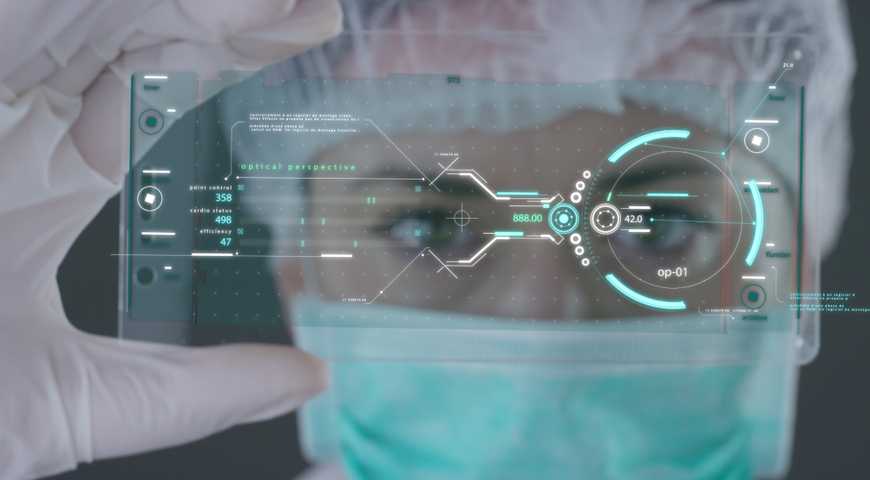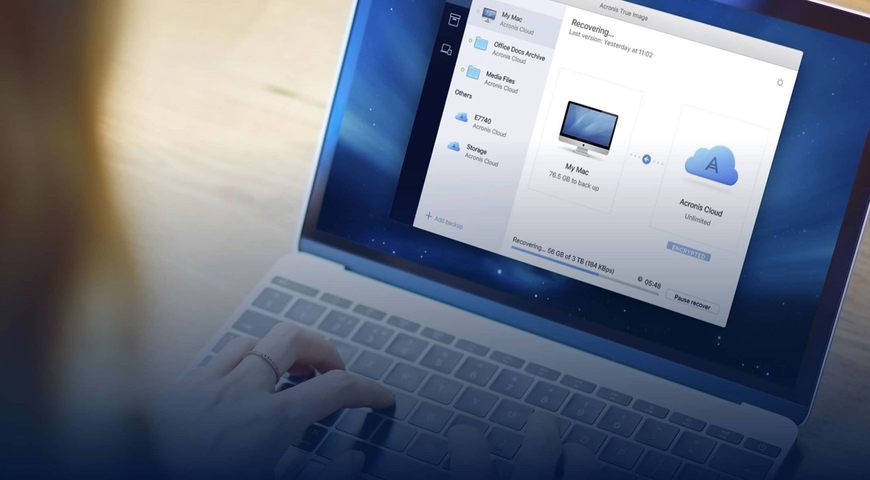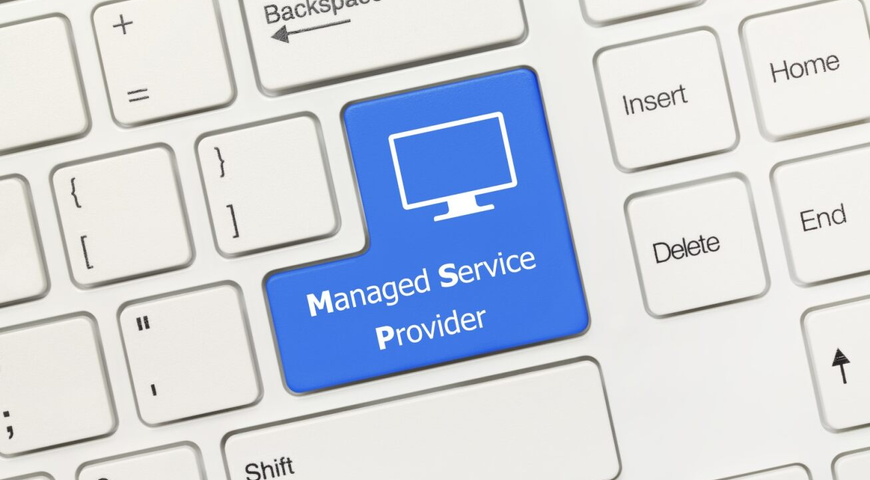
From booking appointments to filling prescriptions, data plays an integral role throughout a patient's health care journey. A patient’s initial point of contact typically starts with booking an appointment which includes demographic and patient medical history data that provide a detailed background on the patient’s past exams. Throughout a patient’s visit, electronic health records (EHR), lab results, electronic prescriptions and other clinical assets comprise the diagnostic and treatment plan data. Importantly, data in health care is not limited to electronic health records, but also identifiers in personal health information (PHI), containing credit card information, addresses and phone numbers.
Health care providers depend on critical information to make well-informed decisions when evaluating, analyzing, diagnosing and treating patients — as well as aftercare. This makes EHR and PHI prime targets for cybercriminals who launch ransomware attacks on organizations in the health care sector: for example, the Akira ransomware group claimed numerous victims in 2023, demanding ransomware payments of up to $4 million.
One of the most disruptive aspects of ransomware is data loss, which detrimentally impacts the quality, performance and delivery of health care services. Additionally, natural disasters such as hurricanes, earthquakes, tornadoes and blizzards cause to data loss that leads to operational, reputational and financial damages. Modern health care organizations institute data protection solutions, for instance, backup and disaster recovery, to combat unforeseen events, mitigate risk of data loss and safeguard the continuity of quality patient care.
In this article, we explore the importance of backup and recovery, provide tips for developing a comprehensive backup strategy, and cover best practices for backup and recovery in the health care sector.
An overview of modern backup and recovery in health care
For modern health care services, backup and recovery solutions are non-negotiable when it comes to defending IT infrastructure and patient information. The core purpose of data backup is to ensure a duplicate copy of health care data is created and stored elsewhere. The data can then be restored in case of compromise, natural disaster or loss.
Health care data comprises both structured and unstructured types. Structured data is quantitative in nature and can be easily formatted to capture demographic information, vital signs, laboratory results, medications and more. Structured data generally presents defined results that are easily interpreted by health care workers. Conversely, unstructured data is undefined information that needs further context, extraction and visualization to interpret its meaning. Unstructured data includes radiographs, medical images, videos and audio and written clinical notes.
According to the National Center for Biotechnology Information (NCBI), nearly 80% of data in health care remains unstructured. This category of data is challenging to monitor, track and secure because of its distinct formats that are intended to be shared readily in email and documents. It is increasingly difficult to organize and manage unstructured data, making backup solutions essential to protection.
How often should health care organizations perform backups? The leading factors influencing the frequency and extent of health care data backups center on regulatory compliance, such as the Health Insurance Portability and Accountability Act (HIPAA); the criticality of personally identifiable information (PII); and a solution’s ability to perform automatic backups.
Risks to health care data
Cyberattacks, data breaches and natural disasters have reputational, financial and legal consequences for hospitals and health care facilities. These repercussions contribute to the deterioration of patient trust and erode confidence among stakeholders. In conjunction with proactive cybersecurity measures, health care executives and IT security professionals should come together to develop a comprehensive data backup strategy.
Four steps to developing a data backup strategy in health care
At Acronis, creating a comprehensive backup strategy is devised into four steps.
Identifying assets and prioritizing highly valuable data
We often say, “you can’t protect what you don’t know you have” in cybersecurity, and the same phrase applies to health care data. Assessing the criticality of data helps prioritize integral information throughout the health care organization to ensure the most valuable data for workflows and processes remain impervious to loss. If the absence of these key types of data causes organizational operations to flounder, they are likely considered crucial and require frequent backups.
Building a holistic strategy with the appropriate backup method
The available backup storage options on the market are not created equally. There are three common backup storage methods: on-site, off-site and hybrid. We define these top three traditional backup options below.
On-site backup solutions
Local storage, also known as on-site backup, serves many purposes in the health care industry. In on-site backup, data copies are stored on physical hard drives and media that separate backups from potentially at-risk systems. The copies remain on premises to make them easily accessible to authorized individuals. The advantage of on-site backups is that backup is done on premises, which eliminates some of the risks associated with data exploitation, theft and tampering. Additionally, internet access is not required to retrieve on-site data and can be immediately recovered.
One of the greatest pitfalls, however, is that on-site backup is vulnerable to natural disasters. If on-site servers are destroyed by a fire or other catastrophic event, the health care organization could lose all collected data.
Discover why the top hospitals trust our backup solutions. Protect your patient data now with the best backup and recovery solution for healthcare industry!
Off-site backup solutions
Off-site backup is a type of data protection that stores a copy of the health care business’s production system in a separate geographical location than the production system. In off-site data backup, data is stored to an off-site server or other media devices that are then brought to a separate location or moved to the cloud.
The advantages of off-site backups are that they are easy to scale, are cost-effective and allow you to access backup data from anywhere, at any time. Fundamentally, unlike on-site backups, off-site backups remain safe from natural disasters and the data backed up will not be impacted by storms, fires, floods or a disaster with the health care facility itself.
However, off-site backups are accompanied by a few cons. Cloud backups can cause slow network speeds as information is copied and stored. It is recommended that health care organizations schedule backups at strategic times to avoid interrupting daily operations. Another setback of cloud backups is the loss of control when using a third-party cloud storage provider. Organizational and patient data will no longer be under the organization’s full control, so doing homework to select the right cloud storage vendor is imperative to ensuring backup security. With the right off-site backup solution, anti-ransomware keeps data secure from cyberattacks and if hit, data can be restored to a pre-ransomware state.
Check out Acronis Cyber Protect Backup and Recovery to explore data protection across physical, virtual, cloud and mobile environments for organizations.
Hybrid backup solutions for healthcare
Hybrid backup solutions combine the benefits of on-site and off-site backup strategies for added resilience. The two methods of backup work in tandem to provide quick access to data through on-site backups and enable enhanced cyber protection and disaster recovery through off-site backups. The result gives health care providers the upper hand, allowing health care professionals to access restored, critical data swiftly in an emergency without compromising the security of backup repositories.
Satisfying regulatory compliance
Satisfying regulatory compliance is important to avoid hefty fines and ensure the most basic level of data protection. HIPAA, National Health Services (NHS) and General Data Protection Regulation (GDPR) mandate security measures, practices and requirements to uphold the privacy and security of patient information. Failure to meet these regulations may lead to legal action, fines and reputational damage.
Ensuring alignment with the disaster recovery solution
Business continuity disaster recovery (BCDR) is no longer thought of as a siloed area of security. In other words, backup and BCDR are integrally fused into health care establishments. IT professionals and executives who recognize the value of business continuity solutions and understand cybersecurity, backup, and disaster recovery strategies must align to deliver favorable outcomes and quality care to patients. Also, aligning recovery time objectives (RTOs) and recovery point objectives (RPOs) with backup and recovery helps prioritize recovery efforts tailored to health care organizations that minimize the impact on operations and foster unmatched continuity.
Essential health care data backup and recovery best practices
Locate production and DR centers in separate locations
For a disaster and recovery plan to be truly effective, the backed-up data must be stored in a location away from the primary site: the health care facility. It is recommended that the data center that houses the backup should be more than 150 miles from the facility. This protects health data by minimizing the impact of a single disaster, such as outages and storms.
Test and fine-tune your DR strategy
Conducting regular tests to assess the efficacy of a disaster and recovery plan assures the functionality of recovery processes, procedures, systems and technologies in case of an emergency. Disaster recovery is highly collaborative and involves a team of experts who carry out specific tasks. Building a checklist to guide staff through simulated recovery exercises can proactively catch flaws in recovery procedures, confirm the organization’s level of readiness, and give IT teams an opportunity to fine-tune weak aspects in recovery.
Develop a future-focused backup and recovery culture that follows the DR plan
Having a company-wide, data protection-first culture is a valuable approach that emphasizes the importance of educating staff. This reinforces the health care organization’s preparedness against disasters if, for some reason, the designated individuals responsible for specific disaster recovery tasks are absent. When staff can step in during a data emergency, the organization can mitigate human factors, which lead to disaster recovery failure.
Why patient data is pivotal to performance and ROI: Data privacy, protection and integrity
Quality patient data plays a monumental role in shaping the overall performance, standard of care and return on investment (ROI) for health care organizations. Patient data equips clinicians and health care professionals with key information needed to make diagnoses and develop personalized treatment plans. Health care providers must prioritize the privacy, protection and integrity of data to bolster confidentiality, security and trust with patients. Maintaining data integrity is also vital to the accuracy and reliability of health records. In essence, these qualities are directly linked to patient experience.
Key takeaways
Effective data backup and recovery remains an essential component within the health care sector. The importance of adhering to best practices in this regard cannot be overstated, as data is interconnected at every facet of patient care. In unfortunate circumstances, the ability to restore backed-up data is game changing for health care professionals — especially in medical emergencies. Backup and recovery solutions fortify your health care organization’s data security efforts to empower providers and champion patient outcomes.
About Acronis
A Swiss company founded in Singapore in 2003, Acronis has 15 offices worldwide and employees in 50+ countries. Acronis Cyber Protect Cloud is available in 26 languages in 150 countries and is used by over 20,000 service providers to protect over 750,000 businesses.




